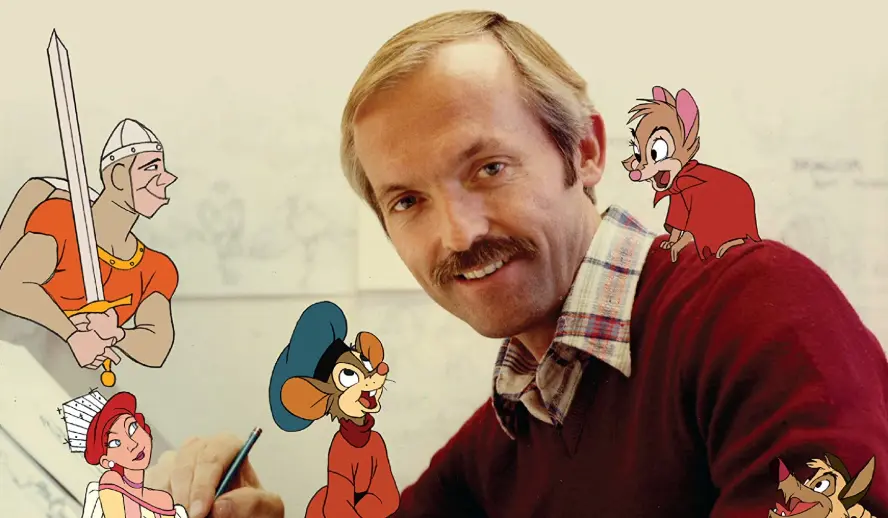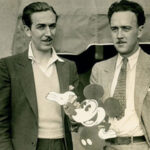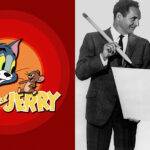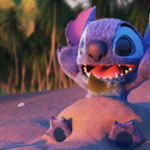Table of Contents

The Dark Age of American Animation
For close to a century now, Disney has been synonymous (and indeed, treated as all but interchangeable) with American animation at large. If you go back and watch a Disney animated feature from the 1940s or ‘50s, you’ll notice just how fluid and lushly drawn the animation itself often is and how it manages to hold up to the test of time. Even a more modest production from that period proved magnificent, like ‘Lady and the Tramp’, which was so lavishly produced that it was shot in ultra-wide CinemaScope. Contrast the Disney output of this period, basically up to the time of Walt Disney’s death in 1966, with the animated Disney ventures that came afterward. While movies like ‘Robin Hood’ and ‘The Rescuers’ are not exactly bad per se, the jump from hand-drawn animation to computer animation is noticeable.
Things to do:
- Subscribe to The Hollywood Insider’s YouTube Channel, by clicking here.
- Limited Time Offer – FREE Subscription to The Hollywood Insider
- Click here to read more on The Hollywood Insider’s vision, values and mission statement here – Media has the responsibility to better our world – The Hollywood Insider fully focuses on substance and meaningful entertainment, against gossip and scandal, by combining entertainment, education, and philanthropy.
Disney’s output in the ‘70s was overall disappointing, and nobody understood this better than Don Bluth. Born in 1937, Bluth began working as an animator at Disney in the ‘60s but took on more prominent roles in ‘70s productions such as ‘The Rescuers’ and ‘Pete’s Dragon’, the subpar quality of which incentivized him to leave Disney and form his own animation studio, Don Bluth Productions. In the 1980s, while Disney was struggling to produce critical and commercial hits, Bluth’s features were setting a new standard for American animation — a standard that would both doom Bluth and cement his legacy.
WATCH THE TRAILER of the Film and the Revolution: ‘Can I Go Home Now?’ The Children Around the World Continue to Ask the question
‘The Secret of NIMH’ (1982)
Bluth’s first feature, and arguably his greatest, was ‘The Secret of NIMH’, released a year after Disney’s ‘The Fox and the Hound.’ These two movies can hardly be more different, although each does have its virtues; ‘The Fox and the Hound’ is a calm and melancholy slice of life about the friendship between a fox and a bloodhound, while ‘The Secret of NIMH’ has considerably higher ambitions. Based on Robert C. O’Brien’s bestselling novel Mrs. Frisby and the Rats of NIMH, Bluth’s film follows Mrs. Brisby (name changed), a little mouse of a housewife who ventures into the wilderness in hopes of finding a cure for her deathly ill son. Along the way, Mrs. Brisby comes across a secret society of rats, not only intelligent but technologically advanced to a supernatural degree.
Related article: MUST WATCH – The Hollywood Insider’s CEO Pritan Ambroase’s Love Letter to Black Lives Matter – VIDEO
Not only is ‘The Secret of NIMH’ gorgeously animated, with a fluidity not seen in Disney productions at this time, but it’s a mature fable about the complicated relationship between technology and mysticism, simple and fast-paced enough that children can understand, but ponderous enough for an adult audience. Despite being rated G, ‘The Secret of NIMH’ is more mature and intense than any modern Disney movie you can think of, but it’s also the most perfectly balanced of Bluth’s movies in terms of maturity. If Bluth were to have a single masterpiece, ‘The Secret of NIMH’ might be it.
‘An American Tail’ (1986)
The mid-1980s marked perhaps Disney’s darkest hour, with the commercial and critical disaster that was ‘The Black Cauldron’ in 1985. While Disney was floundering, Bluth’s sophomore feature would become (up to that point) the highest-grossing animated film of all time. ‘An American Tail’ was released in 1986, in direct competition with Disney’s mouse-centric venture, ‘The Great Mouse Detective’, and critics generally preferred the latter. Two popular movie critics of the time, Gene Siskel and Roger Ebert, go on to criticize ‘An American Tail’ for being too dark for children. Despite this, Bluth’s feature performed considerably better at the box office. Several of Bluth’s films would compete directly with Disney’s output for any given year, but it was the rivalry between ‘An American Tail’ and ‘The Great Mouse Detective’ that would, more than anything else, set up what would later be known as the Disney Renaissance.
For the moment, Bluth was on top, and with none other than Steven Spielberg in the producer’s chair (not the last time the two would collaborate), ‘An American Tail’ stands out as a striking (if also perhaps too dreary) depiction of the immigrant experience in America. Never before or since has New York been given such life (warts and all) through hand-drawn animation.
Related article: In-Depth Analysis | The Unexpected Queerness of ‘Bob’s Burgers’: Why the Show is an Animated Ally
Related article: EVOLUTION: Every Chris Evans Role From 1997 to 2020, All Performances Exceptionally Poignant
Related article: A Tribute to Steven Spielberg: The Father of the American Blockbuster
‘The Land Before Time’ (1988)
Don Bluth’s last financial hit (with one exception) was ‘The Land Before Time’, released in 1988. Not only did Spielberg return as a producer, but George Lucas also joined the project as a co-producer. This time, ‘The Land Before Time’ is about the dinosaurs — specifically Littlefoot, a young sauropod looking for the Great Valley (a Jerusalem for sauropods) in the wake of his mother’s death. Now, I admit right now that I’m biased, but ‘The Land Before Time’ is my favorite of Bluth’s films; it’s the one I grew up watching the most, and even as an adult, I find its allegorical approach to death and grief to be arresting. The story is quite simple, with Littlefoot making friends as he treks through the prehistoric land, overcoming natural obstacles and giant carnivores who want to have him for breakfast, but much like Bluth’s previous films, it’s steeped in a haunting dreaminess that may be too intense for children, but which nonetheless envelopes the viewer in a haze of implicit mysticism.
Related article: A Tribute To George Lucas – One of the Greatest Storytellers of Our Time
Related article: Upcoming Sequels From Walt Disney Studios: ‘Deadpool & Wolverine’, ‘Inside Out’, ‘Avatar’ and More
Related article: An Ode to New York: The 10 Best New York Movies to Taste the Big Apple
Unfortunately, while it did well at the box office, ‘The Land Before Time’ did not perform as well domestically as Disney’s release that year, ‘Oliver & Company.’ For what it’s worth, the latter is the more obscure movie nowadays. Have you seen ‘Oliver & Company’? Interference from Spielberg and Lucas also resulted in the film being cut for content considered “too scary” for children, resulting in a film that is maybe too short (only 69 minutes). From here on out, studio interference would only worsen for Bluth and never get better.
Related article: Understanding the Star Wars Timeline
Related article: A Tribute to Francis Ford Coppola: One of Cinema’s Unforgettable Directors | ‘Megalopolis’, ‘The Godfather’ & More
Related article: #metoo Revolution: Powerful Questions That Need Answers
Related article: FACT-CHECKED Series: Timothee Chalamet and 32 Facts about The Young Superstar
Related article: A Tribute to Dreamworks: The Rise of the Animation Company that Created ‘Shrek’, ‘Shark Tale’, and ‘The Croods’
‘All Dogs Go to Heaven’ (1989)
Then came the terror. Without so much as skipping a beat, Bluth released his next feature, ‘All Dogs Go to Heaven’, only one year after ‘The Land Before Time.’ Of Bluth’s first four features, ‘All Dogs Go to Heaven’ was the least successful commercially, and to this day, it remains something of a hidden gem. The plot is a bit zany, granted. We get Charlie, a wisecracking dog who runs a gambling racket, and early on, he gets killed by the leader of a 1920s-style mob (also run by dogs). Charlie gets sent to heaven, even though he’s pretty far from a boy scout — but, not wanting to stay dead, he pulls a fast one and makes his way back to the land of the living. Can Charlie redeem himself? Will he get sent to Hell the next time he dies? It’s all a bit morbid, and of Bluth’s first four films, ‘All Dogs Go to Heaven’ is the most tonally inconsistent; even so, it continues the mystical angle of Bluth’s previous efforts with gusto, more than making up for its narrative shortcomings.
Related article: Top 10 South Park Characters | Who Makes the Cut? Kenny, Chef, Butters, Towelie, Eric?
Related article: Netflix’s ‘Bubble’ Bursts at the First Sign of Trouble | Japanese Anime
Related article: Top 10 Non-Disney Animated Movies | ‘Shrek’, ‘Anastasia’ to ‘Team America’ & More
‘All Dogs Go to Heaven’ only did decently on the commercial front, and Disney’s animated feature that year, ‘The Little Mermaid’, eclipsed Bluth both critically and commercially, not only wrestling Bluth’s grip on the industry away from him but unambiguously marking the beginning of the Disney Renaissance. While Bluth would continue to direct movies after ‘All Dogs Go to Heaven’, he would never again direct a film that taps into his unique virtues as a filmmaker.
The Decline and Fall of Bluth’s Empire
Things were never the same again. On paper, Bluth was more productive in the ‘90s than he was in the ‘80s, with five features released. However, something had gone very wrong: of these five features, only ‘Anastasia’ managed to leave a mark without significant contempt. In 1991, we saw ‘Rock-A-Doodle’, in 1994, ‘A Troll in Central Park’ and ‘Thumbelina’, in 1995, ‘The Pebble and the Penguin’, and in 1997, we got ‘Anastasia’, which was treated as a return to form. Between MGM, Warner Bros., and the studio previously known as 20th Century Fox, Bluth made films that now had major financial backing, but the firm grip these studios had on his productions guaranteed that he could no longer make his films nearly as spiritual or challenging as before, with all of the aforementioned films (except for ‘Anastasia’) being far more comedic than what was customary for Bluth — and far less ambitious than previous projects.
‘Anastasia’, of course, did decently with critics and audiences, and some people remember it fondly to this day, but even so, it reeks of an attempt to copy what had become the signature style of Disney. Bluth’s final feature as director, ‘Titan A.E.’, released in 2000, was such a financial trainwreck that it forced Fox Animation Studios to close its doors. While ‘Anastasia’ provided some relief, Bluth’s career spiraled in the 1990s, and for the past two decades, he has been in semi-retirement.
Related article: Merge of the Titans: The Completion of Discovery Media Taking Over Warner Media to Create Warner Bros. Discovery
Related article: Down Goes Another Former Studio of the Golden Age of Hollywood: MGM Gets Amazoned
Related article: What Is Going on at Sony Pictures Animation? The Reasons Behind the Revitalized Success
Why We Need Hand-Drawn Animation
The world of animation (especially in the United States) has changed so drastically since Don Bluth’s peak years that watching his best movies nowadays feels like you’re stepping into a different realm. American animation studios will, pretty much without exception, only produce 3D animated features. When ‘Spider-Man: Into the Spider-Verse’ hit theaters in 2018, people’s minds were blown by the fact that some effects at least appeared to be drawn by hand. While Bluth’s films were never perfect, they captured emotions and tones that 3D animation seemingly has a harder time achieving. 3D animation, while it can be both visually and emotionally gripping at times, lacks the human imperfections of hand-drawn frames. Why does ‘Akira’, the most pivotal of anime movies, still dazzle viewers after more than three decades, while early 3D outings like ‘A Bug’s Life’ are now more treated as artifacts? Part of it has to do with advancements in technology; early 3D animated films simply don’t look as convincing as what comes out now, but I think it also has to do with a difference in technique and even a difference in philosophy. Don Bluth’s best films showed us, at a time when the animation industry was in a tough spot, that you can make movies aimed at children that are nonetheless intense, somber, contemplative, and yet still adventurous.
Related article: EVOLUTION: Every Ryan Gosling Role From 1995 to 2020, All Performances Exceptionally Poignant
Related article: EVOLUTION: Every Henry Cavill Role From 2001 to 2021, All Performances Exceptionally Poignant
Related article: Disney Movies Ranked: Crème De La Crème of The Disney Renaissance Age
Related article: The 80th Anniversary of ‘Casablanca’: A Truly Timeless Classic
Today, Disney all but owns theatrical animation in America. There are a couple of challengers: DreamWorks refuses to back down, despite its shaky output, and Sony Pictures Animation has stepped its game up in the past few years, but animation, specifically children’s animation, is now defined by Disney and the formula it has made for itself. Don Bluth shook up the industry at a time when it threatened to stagnate into oblivion; we could use another filmmaker like him.
Click here to read The Hollywood Insider’s CEO Pritan Ambroase’s love letter to Cinema, TV and Media. An excerpt from the love letter: The Hollywood Insider’s CEO/editor-in-chief Pritan Ambroase affirms, “We have the space and time for all your stories, no matter who/what/where you are. Media/Cinema/TV have a responsibility to better the world and The Hollywood Insider will continue to do so. Talent, diversity and authenticity matter in Cinema/TV, media and storytelling. In fact, I reckon that we should announce “talent-diversity-authenticity-storytelling-Cinema-Oscars-Academy-Awards” as synonyms of each other. We show respect to talent and stories regardless of their skin color, race, gender, sexuality, religion, nationality, etc., thus allowing authenticity into this system just by something as simple as accepting and showing respect to the human species’ factual diversity. We become greater just by respecting and appreciating talent in all its shapes, sizes, and forms. Award winners, which includes nominees, must be chosen on the greatness of their talent ALONE.
I am sure I am speaking for a multitude of Cinema lovers all over the world when I speak of the following sentiments that this medium of art has blessed me with. Cinema taught me about our world, at times in English and at times through the beautiful one-inch bar of subtitles. I learned from the stories in the global movies that we are all alike across all borders. Remember that one of the best symbols of many great civilizations and their prosperity has been the art they have left behind. This art can be in the form of paintings, sculptures, architecture, writings, inventions, etc. For our modern society, Cinema happens to be one of them. Cinema is more than just a form of entertainment, it is an integral part of society. I love the world uniting, be it for Cinema, TV, media, art, fashion, sport, etc. Please keep this going full speed.”
More Interesting Stories From The Hollywood Insider
– Want GUARANTEED SUCCESS? Remove these ten words from your vocabulary | Transform your life INSTANTLY
– A Tribute to Martin Scorsese: A Complete Analysis of the Life and Career of the Man Who Lives and Breathes Cinema
– Do you know the hidden messages in ‘Call Me By Your Name’? Find out behind the scenes facts in the full commentary and In-depth analysis of the cinematic masterpiece
– A Tribute To The Academy Awards: All Best Actor/Actress Speeches From The Beginning Of Oscars 1929-2019 | From Rami Malek, Leonardo DiCaprio To Denzel Washington, Halle Berry & Beyond | From Olivia Colman, Meryl Streep To Bette Davis & Beyond
– In the 32nd Year Of His Career, Keanu Reeves’ Face Continues To Reign After Launching Movies Earning Over $4.3 Billion In Total – “John Wick”, “Toy Story 4”, “Matrix”, And Many More









